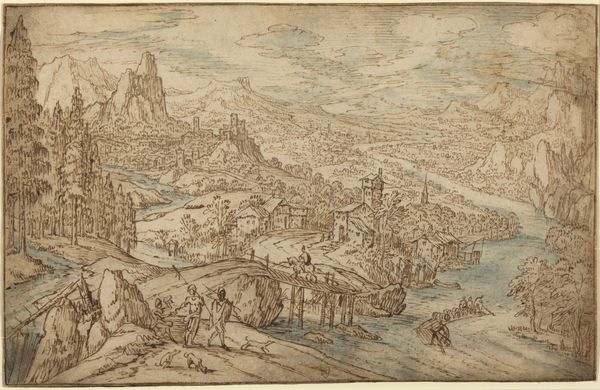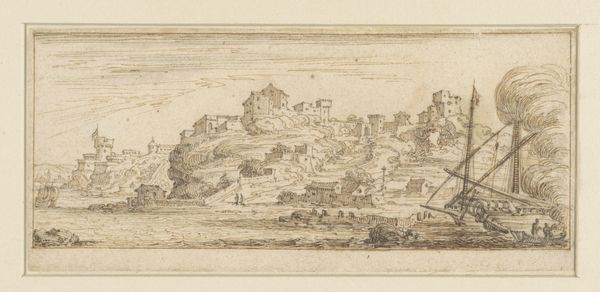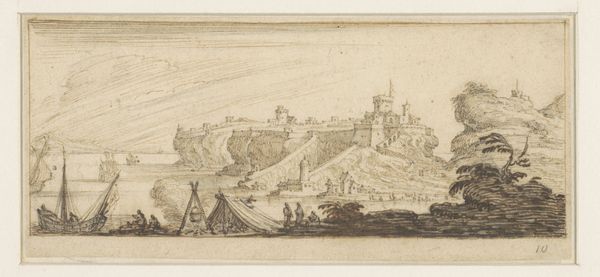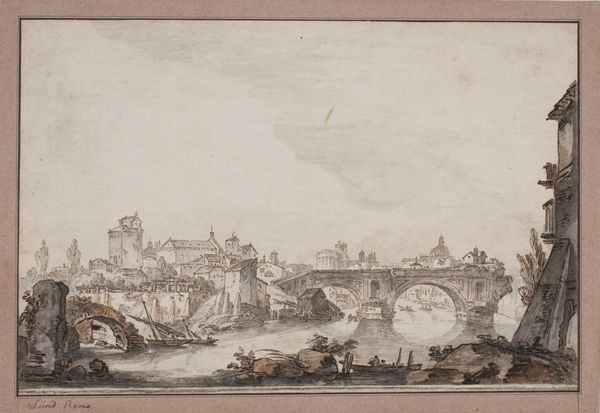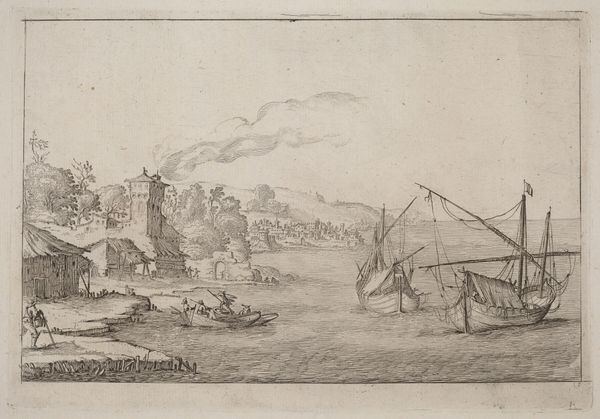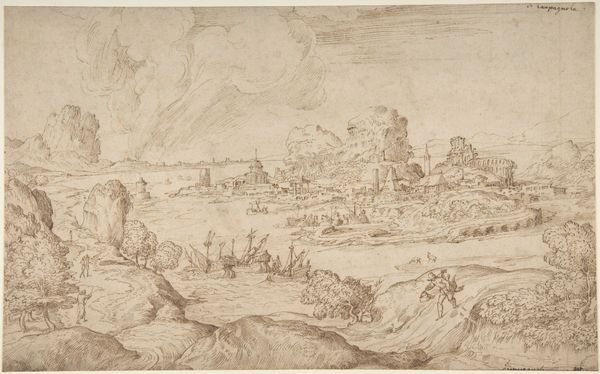
drawing, paper, ink, pen
#
drawing
#
baroque
#
landscape
#
paper
#
ink
#
coloured pencil
#
pen and pencil
#
pen
#
cityscape
#
watercolor
Dimensions: height 198 mm, width 268 mm
Copyright: Rijks Museum: Open Domain
Curator: Here we have Tobias Verhaecht's "City on a Bay; Galleys Sailing to the Right," a drawing created between 1620 and 1631. It’s rendered in pen and ink on paper. Editor: My initial impression is that this feels like a precarious civilization. The imposing architecture is softened by the delicate, almost fragile line work, and there is something about that smoky sky that suggests industrial activity is present here and changing things, possibly threatening things. Curator: I find it fascinating how Verhaecht uses the conventions of Northern European landscape to create an image so loaded with visual symbolism. The galleys for instance represent journeys, and evoke perhaps an idealized vision of travel and trade. But, you're right, there's a slight anxiety. Editor: Absolutely. Galleys meant commerce, sure, but also conquest. The walled city itself, rendered with a light touch that almost feels transparent, sits at a liminal space, both a secure haven and an imposing structure, a barrier against the sea but also connected to the outer world. Look at the tiny figures at the entrance, like sentinels but also like laborers or immigrants or even invaders. Curator: Those details are telling, aren’t they? And, for me, the towers in the drawing serve almost as psychological markers. We’re literally observing power and control and also a society reaching towards the sky, almost in a religious sense, although, in this context, there's little overtly religious symbolism. They reflect a constant reaching for something more, but their height, and vulnerability, speaks volumes about a place that could as easily rise as crumble. Editor: Agreed. I can't help but read the smoke billowing from one tower as a visual warning sign, that hints at an industrial revolution starting to upset natural harmonies. Or maybe just pollution! But, even back then, pollution affected society in uneven ways, exposing issues of economic status and the vulnerability of poor neighborhoods to industrial toxins. This piece asks what kind of trade or progress can only exist under those conditions. Curator: A prescient observation! Perhaps this isn’t just a city on a bay, but a complex meditation on ambition and mortality rendered in delicate strokes of ink. Editor: I’ll add that for all its historical setting, this city by the sea has become for me, a timely prompt for reflecting on questions that affect us even now about power, ecology, labor, and equity.
Comments
No comments
Be the first to comment and join the conversation on the ultimate creative platform.
